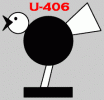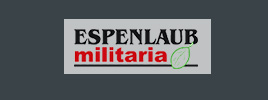-
 Das Kriegsverdienstkreuz des Jahres 1939.
Das Kriegsverdienstkreuz des Jahres 1939.
The aim of this thread is to provide the reader with the basic information about the Kriegsverdienstkreuz and it's different versions. This is a short introduction to the award and I will examine the different classes in some more detail on following posts. I will add to and amend when needed.
The Kriegsverdienstkreuz (KVK) was instituted on the 24th October 1939. The creation of this new series of awards was to compensate for the lack of a non combatant version of the Eisernes Kreuz which was reinstituted in September 1939, a month earlier.
These new awards, seperate from the Eisernes Kreuz series would allow acts of gallantry or merit, not in direct combat, to be recognised. If such an act was recognised of military nature the award would be granted with swords. For those acts away from the front line and of a non military nature, an award without swords would be given.
The initial institution only made provision for a first and second class award although over time a range of decorations were created under the the title of die Ordnung der Kriegsverdienstkreuz or Order of the War Merit Cross.
The Kriegsverdienstkreuz is an eight pointed cross in Maltese style, the eight points created by the end of each of the four arms being notched and therefore having two points on each.
The face of each arm, front and back, bears fine pebbling surrounded by a narrow border, the edges flat. Each arm radiates from a central wreath of oakleaves. The central area of the wreath would bear a swastika on it's obverse side and the date of institution - 1939 on the reverse. The version with swords had the addition of two straight bladed swords crossing through the centre of the award, between the main arms. The hilts of the swords at the bottom, the pointed ends of the blades at the top.
The marking of these awards only came about in 1941 after the creation of the LDO or Leistungs Gemeinschaft der Deutscher Ordenshersteller. Therefore those awards made prior to this date would not be marked and therefore can be dated to the early part of the war. The most common marking found on the KVK is the PKZ or Präsidialkanzlei des Führers Lieferant number which consists of an unprefixed number stamped onto the ribbon ring or in the case of a 1.Klasse award, the reverse face or pin. The marking or non marking of any piece should not be used as a factor to determine originality of any award.
On August 19th 1940, two new classes of the Kriegsverdiestkreuz were added, a Kriegsverdienstmedaille (KVM) or War Merit Medal and a Ritterkreuz (RK) or Knight's Cross. The Kriegsverdienstmedaille ranked below the first and second classes and the Ritterkreuz above. It is worth pointing out that while the Eisernes Kreuz had classes added at the top end of it's spectrum, the Kriegsverdienstkreuz had a lower class added.
So, the new statute dated 28th August 1940 gave the Kriegsverdienstkreuz the following classes:
Kriegsverdienstmedaille
Kriegsverdienstkreuz 2.Klasse
Kriegsverdienstkreuz 1.Klasse
Ritterkreuz des Kriegsverdienstkreuzes
Ritterkreuz des Kriegsverdienstkreuzes in Gold
The Kriegsverdienstkruez was a respected decoration and was awarded for meritorious deeds and not to be considered a substitute for an Eisernes Kreuz nor a commemorative medal or a long service medal.
Last edited by Adrian; 01-08-2013 at 08:24 PM.
 Looking for LDO marked EK2s and items relating to U-406.....
Looking for LDO marked EK2s and items relating to U-406.....
-
01-07-2013 03:22 PM
# ADS
Circuit advertisement

-
 Das Kriegsverdienstmedaille.
Das Kriegsverdienstmedaille.
The Kriegsverdienstmedaille (KVM) or War Merit Medal was instituted in August 1940, ten months after the KVK. This was down to the fact that the KVK was being awarded in such large numbers, it's prestige was declining and so, recognising this, Hitler introduced the KVM to be awarded to civilians in lieu of the KVK.
The exact numbers awarded went into the millions thus making it one of the most common but also low value awards on the collector's market today. It could be awarded individually or in large numbers, for example, factory workers who exceeded production targets.
The medal itself is circular and measures approx 34mm in diameter and was approx 2mm thick. Variations of these sizes do exist depending on the maker. It was bronze in colour although differences from light to dark can be found, again dependant on manufacturer.
The obverse featured a representation of the KVK ohne Schwerten in relief and the reverse had the words Für Kriegs Verdienst 1939 in Gothic text. Early medals were die struck from tombac but as the war progressed and the availability of such materials became short, later medals were made from zinc. Overall quality remained high. A small loop was attached to the top edge of the medal at right angles to accomodate another, larger loop for the ribbon.


Photo credit to Todd (Helmetone).
The medal came in a protective wrap of tissue paper and in a small brown paper envelope.
It was suspended from a 30mm wide ribbon in the colours red/white/black/red/black/white/red. This is the same as all other KVK ribbons but with an additional thin red centre stripe. As it was not a military decoration, there were no hard and fast rules governing the wear of the medal. Most often it was represented by a ribbon bar or lapel/buttonhole ribbon device although some recipients had their award court mounted for any formal occasion. It could also be worn as a miniature stickpin.


Photo credit to Todd (Helmetone).
The decoration came with an award certificate or Urkunde. Several variations of these exist with different wording, fonts and overall size. Here is a representative example.

Photo credit to Hucks216.
After the end of the war the swastika was banned and therefore all awards bearing this symbol were outlawed. In 1957 new regulations came into place which allowed the wear of decorations earned during the Third Reich era to be worn again but without the swastika.
For the KVM, the only change was to the obverse of the medal, the swastika was removed and replaced with the date '1939'. Considering the abundance of the 1939 version, the 1957 KVM is very scarce and any such piece is much sought after by the KVK collector. Again, the KVM was represented in a miniature in it's 1957 form.


Last edited by Adrian; 01-07-2013 at 06:15 PM.
 Looking for LDO marked EK2s and items relating to U-406.....
Looking for LDO marked EK2s and items relating to U-406.....
-
 Das Kriegsverdienstkreaz 2. Klasse.
Das Kriegsverdienstkreaz 2. Klasse.
The Kriegsverdienstkreuz 2.Klasse was introduced in 1939 and was intended to fill the gap left by the omission of a non combatant version of the Eisernes Kreuz.
It is one of the most common Third Reich awards to be found with in the region of 6,134,950 awards with swords being made and approx 1,592,567 without swords. This does not stop the fakers though and even this common award has been the victim of reproductions.
The medal is an eight pointed cross of Maltese style with a circular central disc measuring approx 49mm x 49mm. The arms of the cross were finished on both sides with a pebbled central surface area with a flat edge and flat border. The central disc has an oak leaf wreath on both sides. On the obverse side a mobile swastika is present within the wreath and on the reverse, the year of institution - 1939.
There are two versions of this cross, a non combatant and combatant. The difference being that the combatant version has a pair of crossed swords passing between the arms and through the central wreath with the handles at the bottom.




The cross was finished in bronze in all cases. Early pieces were made from tombac, brass or bronze but as the war progressed zinc became the more common material. As with most zinc awards, the bronze finish would be absorbed by the base metal over time and nowadays it is entirely possible to find examples which have no finish remaining and with the grey appearance of the zinc base.
Earlier tombac made crosses can be found in remarkably good condition even today with the factory applied lacquer still intact.
The difference in the depth of the bronze finish should be noted too. These awards can be found with a deep and dark brown finish to very light honey colour. These differences in finish should not be used to judge fake from original.
Below are some examples showing the variations in colour and also note the differences in finish to the pebbling on the arms. The examples at the top are tombac pieces with the cross at top left retaining the factory lacquer. The central cross is a brass award and the two at the bottom are both zinc.

A suspension ring was either soldered to the upper arm (in the base of the 'V') or in some cases the ring was cast as part of the award. A ribbon ring was attached to this and the award was suspended by a 30mm wide red/white/black/white/red ribbon which are the colours of the Eisernes Kreuz ribbon in reverse.
Any makers marks are to be found on the ribbon ring. To my knowledge, no marks have been found on other areas of the KVK.


The Kriegsverdienstkreuz 2.Klasse was supplied wrapped in tissue with a 30cm length of ribbon and came in a paper packet. These packets could vary in colour and size but most stated the name of the award centrally on the front and the manufacturers name on the reverse, usually at the lower left.
Here are some examples from the Deschler hoard with an EK2.

On award the medal was threaded through the second buttonhole of the tunic. Thereafter it was represented by a length of ribbon sewn through the same buttonhole or by a ribbon bar which was worn above the left breast pocket or on the left breast if the uniform did not have a pocket. It could also be worn as a buttonhole device on civilian attire. A miniature pair of crossed swords would be attached to represent this class of award.





For formal occasions the medal could be worn as part of a medal bar or mounted singly in the parade/court mount style. Examples can also be found mounted on the triangular Austrian style ribbon. The ribbon for the latter was often wider than the regular 30mm and of the size used for the Ritterkreuz des Kriegsverdiesntkreuz.




The Kriegsverdienstkreuz 2.Klasse could also be purchased privately from licensed LDO retailers. These awards came in a reddish brown flock lined box with a length of ribbon.
There was also the opportunity to purchase stickpins which could represent a single KVK or it be joined with another award/s such as a Verwundetenabzeichen for instance.
The variety and range of award documents for the Kriegsverdienstkreuz is huge and to cover each and every type here would be beyond the point of this thread. To see many of the different variations I would advise visiting the Third Reich Paperwork forum and searching there.
After the end of the war and with the subsequent ban on the swastika, the KVK was re-introduced in the 1957 form without the banned symbol present. This was the only difference between the two variants. The swastika was removed from the obverse central disc and replaced with the institution date of 1939. The reverse side was filled with pebbling, the same as on the arms. All other aspects remained the same.
Again, miniatures could be purchased in this form.






 Looking for LDO marked EK2s and items relating to U-406.....
Looking for LDO marked EK2s and items relating to U-406.....







































Bookmarks